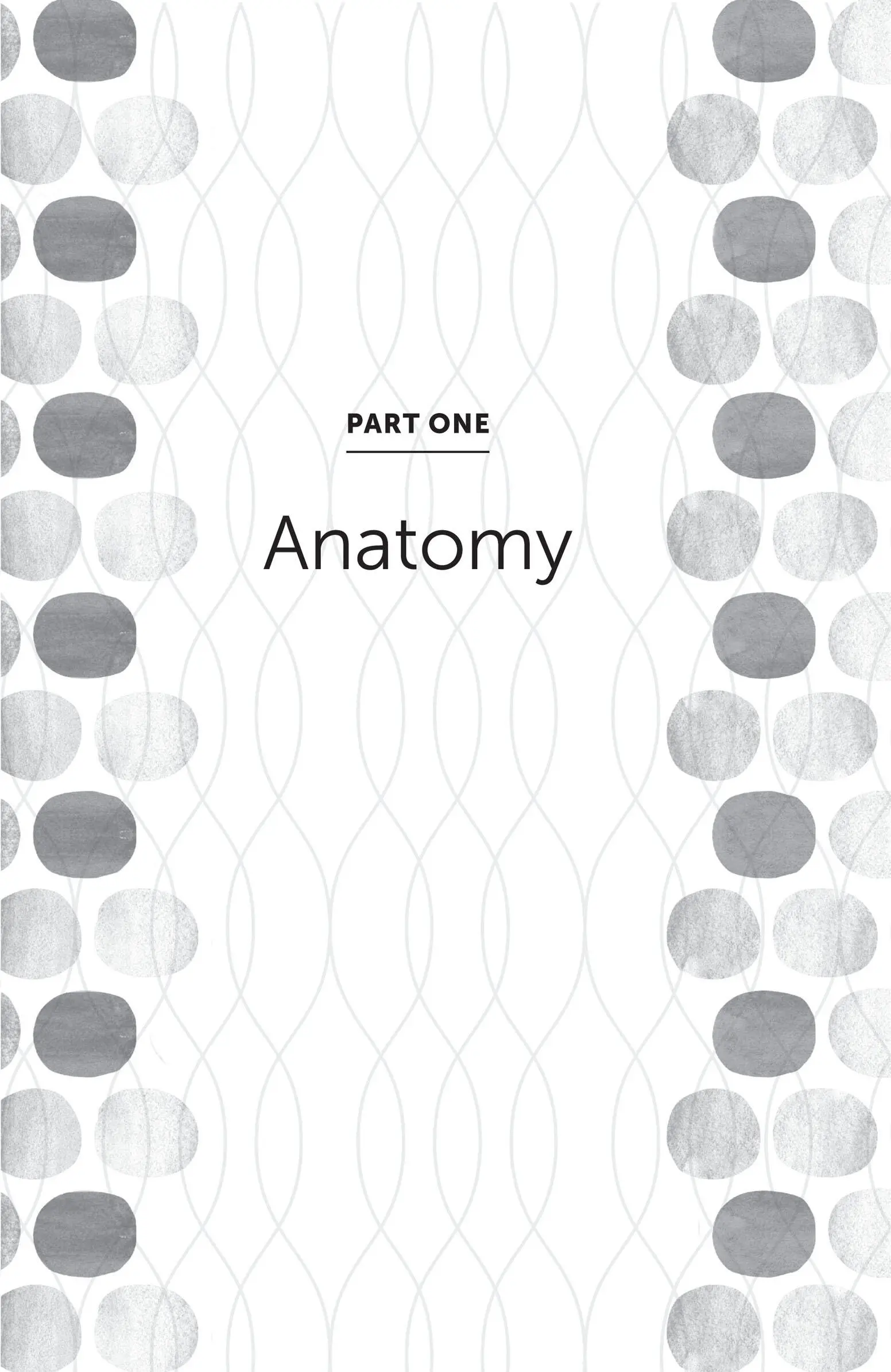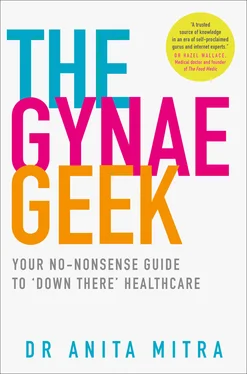I also hope this book will be a conversation starter for women of all ages – because we need to break the taboo around talking about what’s going on down there. The reluctance to do so often delays women in seeking the help they need, which can result in unnecessary suffering and poor health outcomes. I want women to see that there is no question that cannot be asked, no symptom that should be ignored and, most importantly, no need to suffer if they are in need of help.
As well as covering anatomy and the mechanics, sexual health and fertility, I’ve also included a section on lifestyle and women’s wellbeing, which form one of my favourite subjects. A lot of women do not realise there is a link between gynaecological health and how we eat, sleep, move and generally live our lives. There are a surprising number of simple things that can be done on a daily basis to help you and your health today and for the future.
Each chapter includes a section headed ‘Things you’ve always wanted to know, but were too afraid to ask’ – a collection of questions I’m most frequently asked in relation to the particular topic in hand. The chapters then conclude with a short summary – ‘The Gynae Geek’s knowledge bombs’ – which comprises the essentials that everyone should take away from the chapter.
* * *
I set out to write a book that would be engaging and entertaining at times (the opposite of most of the health information that is out there at the moment). And while there are areas where I’ve shared my opinion, as a scientist and a doctor I have been insistent that the information provided is evidence-based and that’s why you’ll see so many references everywhere.
The structure and content have been led by questions my patients, friends and social-media followers have asked me. You may decide to skip over certain sections because they don’t apply to you at the moment. But they may do in the future. Or they may apply to your friend/sister/colleague right now – and I would be honoured if you would share this book with other women who you think would benefit. But also share it with the men in your lives. Because women’s health shouldn’t be a mystery to them either. The health of the nation depends on the health of its women and, therefore, it’s something that everyone should be aware of.
My ultimate goal with this book is to ensure that every woman has access to the information she needs to understand how her body works, to empower her to seek help and thus ensure that no one suffers in silence.
Now go forth, learn, enjoy and don’t ever forget that it’s cool to be a geek!

Since we’re just getting to know one another, I want to share a fact about myself: I’m quite good at charades. Why is that? Because most people seem to use hand gestures, rather than actual words when it comes to their vagina/undercarriage/‘down there’/lady garden/private parts – whatever you want to call it. The fact is, most women I encounter don’t know the proper names for their genitalia. And some wince when I say the word V.A.G.I.N.A. But I want to shout it from the rooftops. It’s not a dirty word! And I think this difficulty with using the right language is one of the major reasons why people feel embarrassed to go and see a doctor when they’re concerned something is not right: because they don’t even know what to call the area in question. That’s why this section provides you with an informal anatomy lesson, with a few interesting anecdotes along the way. So don’t be shy, it’s time to learn the essentials.
CHAPTER 1
External female genital anatomy
Doctor, while you’re down there, can you just tell me if my vagina looks normal?
This is one of the questions I am most frequently asked by my patients, but it is also one of the most inaccurately phrased. What women actually mean is: ‘Does my vulva look normal?’
Many people don’t know the difference between the vulva and vagina, and I think this is a major reason why women so often feel embarrassed to go and see a doctor when they’re concerned that something is not right: because they don’t even know what to call the area they are worried about. What’s more, women’s perceptions of a ‘normal vulva’ are usually inaccurately shaped by the pornography industry, and as someone who looks at vulvas (and vaginas) for a living, I feel appropriately qualified to suggest that this area is becoming a target for body dysmorphia.
It’s very common for women to feel embarrassed or ashamed to take their clothes off and a lot of women apologise as I begin an examination, but it’s important to remember that, as awkward as it may make you feel as a patient, as healthcare professionals we’re totally relaxed and at home. So with that out of the way, let me take you on a brief tour of your anatomy.
The vulva
Vulva, a word that makes a lot of people giggle or blush, is the term used to refer to the external genital region containing the following structures:
Mons pubis Also known as the Mound of Venus, this is the fatty tissue that covers the front of the pubic bone and is covered in hair. A lot of women apologise for not shaving or waxing this area, but there is no evidence to show that hair removal improves hygiene or reduces the risk of infections, so you don’t actually need to (see herefor more on this). Pubic hair also plays a protective role in cushioning the sensitive underlying skin, as well as collecting pheromones, the chemicals that play a role in sexual attraction.

Clitoris and clitoral hood Your clitoris is shaped like the wishbone of a chicken. The clitoral head, about the size of a small pea, is the visible part of the clitoris, but is, in fact, just the tip of the iceberg, because extending down either side underneath the skin are two arms, each about 5–7cm long. The clitoris is made of the same kind of spongy tissue that is found in the centre of a penis, which fills with blood to produce an erection, and the same thing happens to the clitoris during arousal. The clitoral head has the same embryological origin as the head of the penis but contains about two to three times as many nerves, and might explain why it doesn’t need to be pressed like a doorbell with a dead battery, which many men don’t realise. The sensitive nature is also the reason that there is a fold of skin usually covering it, called the clitoral hood.
Urethral opening The urethra is the tube that empties urine from the bladder. It’s much shorter in women, at only about 5cm, compared to 20cm in men, which is why women are more likely to get urinary tract infections (UTIs). This is also the reason why you should wipe front to back after using the toilet, and urinate after sex in order to avoid helping the spread of bacteria into the urethra and up into the bladder. Some women may be able to see their urethral opening, while others cannot, and that’s because it can be quite high up, sometimes even almost inside the vagina. I’ve seen many a medical student try to put a catheter into the clitoris, but it’s always the boys who blush the most when I politely redirect them to the urethra!
Periurethral/Skene’s glands I’ve often been asked at parties by overexcited men about female ejaculation. Well, these are the glands that are responsible for this phenomenon, and they are the female version of the prostate gland. The fluid they make is thought to offer some protection against the bugs that cause UTIs. Infrequently, they can get blocked and swell up, causing a cyst, which can sometimes be confused with a vaginal-wall prolapse.
Читать дальше














